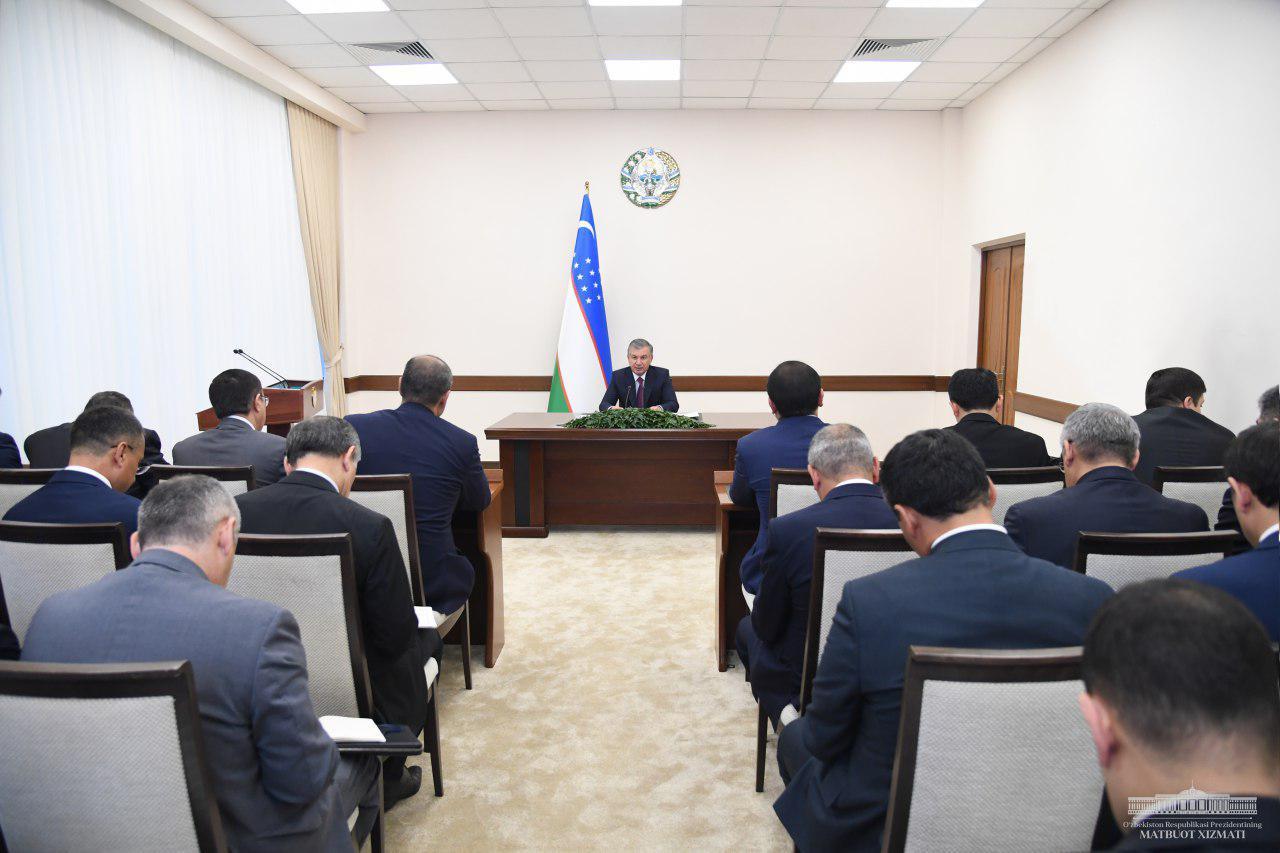
12.07.2019
While visiting the Tashkent Plant of Agricultural Machinery on July 12, President Shavkat Mirziyoyev chaired a meeting on the development of agricultural engineering industry.
The introduction of market mechanisms in agriculture, increase in the purchase prices for grain and cotton, and the expanding exports of fruits and vegetables have had a positive effect on the growth of the income of our dehkans and farmers. Owing to this, they strive to acquire modern technology, improve labor efficiency and raise product quality.
In 2018, farmers received 11.5 thousand units of equipment. Last year, agricultural machinery was exported for 10 million dollars, and for 15 million dollars in the first half of this year.
However, this is far below the existing potential and demand. Today, agriculture needs more than 11 thousand units of equipment, including 4 thousand tractors, 500 combines and over 5 thousand of hanging and trailing machinery annually. In addition, this demand will increase further, taking into account the planned reclamation of 263 thousand hectares of land until 2022 and more than 1 million hectares until 2025.
Today, 46 percent of the equipment has exceeded its useful life or is worn out, while 97 percent of the machinery at the disposal of farmers is intended for cotton and grain growing.
The issues discussed at the meeting included those related to furthering the agricultural machinery production and expanding the range of products and service levels.
From 1 October 2019, this sphere, like other sectors of the economy, will be deprived of tax incentives, which requires more active work from core businesses.
It was noted that the primary tasks of the industry’s enterprises are the production of equipment on the market, reduction of its costs and enhancement of localization.
The President pointed out that there are opportunities to increase from 32 to 56 percent the level of localization of such major components as cabs, control systems, wheels, gearboxes, suspension systems, and cut costs by 30 percent, as well as diminish annual imports by $ 20 million thanks to cooperation among domestic enterprises.
Instructions were given to introduce sustainable financial mechanisms for providing farmers with agricultural machinery, improving equipment service, and supplying spare parts.
The task was voiced to perfect the system of certification of agricultural machinery, to expand the export of not only finished products, but also services. Particular attention was paid to training qualified specialists in the production of modern equipment and its maintenance.
“We need competitive equipment, we need added value. System enterprises must employ thousands of people. Who is able to achieve their goals today? Specialists are. How will this be achieved? With intelligence, knowledge, hard work,” the President stressed.
Responsible officials provided information on the implementation plans for the tasks set at the meeting.



